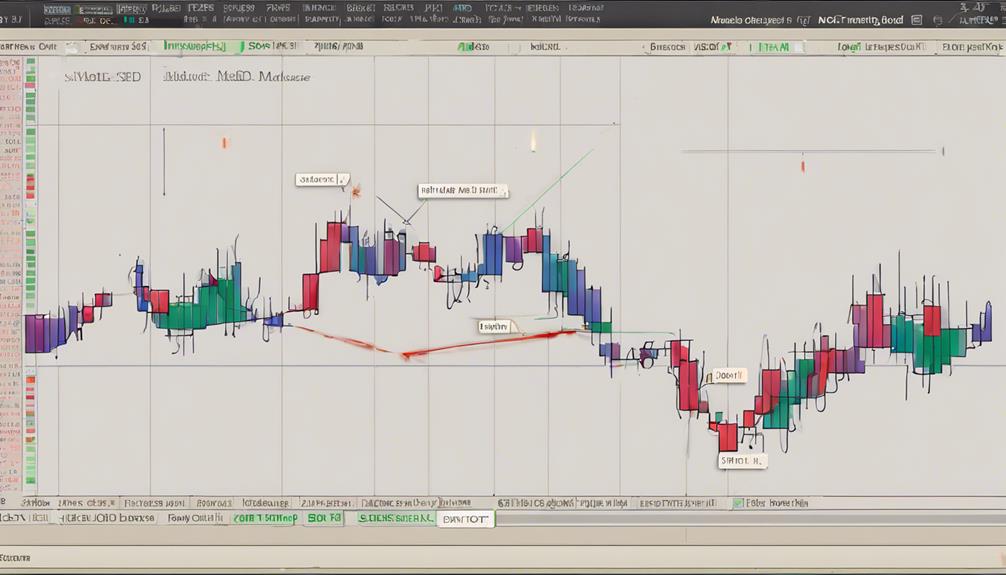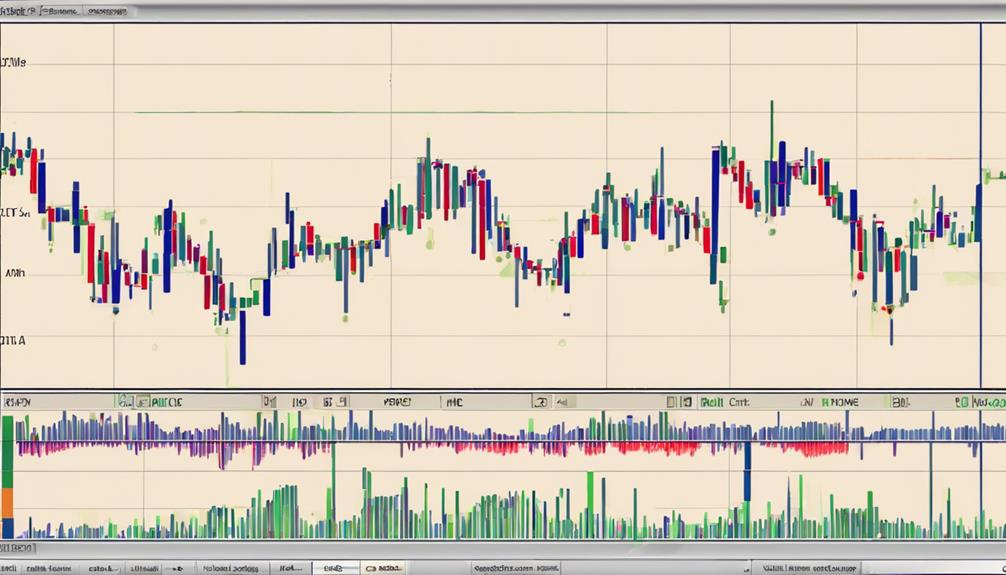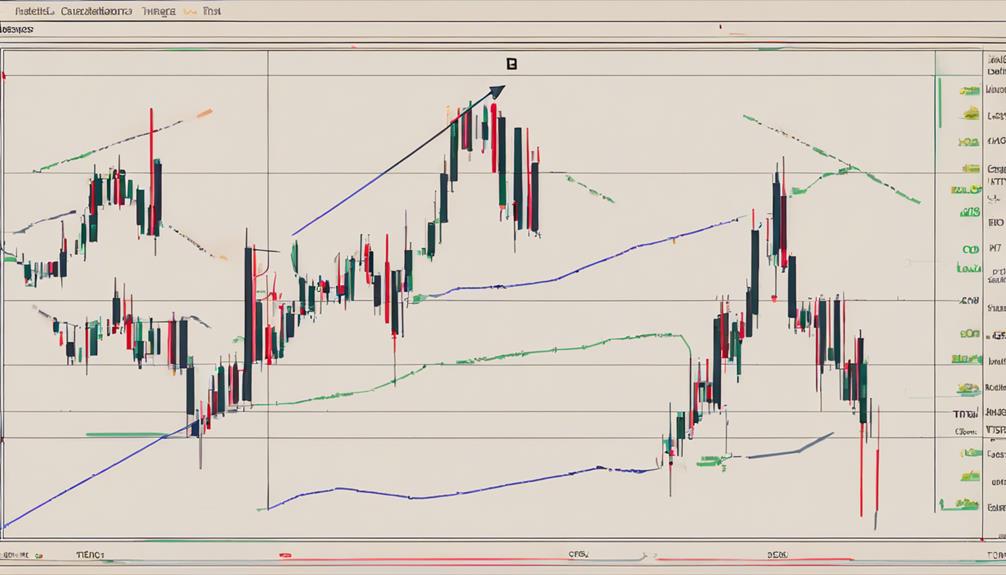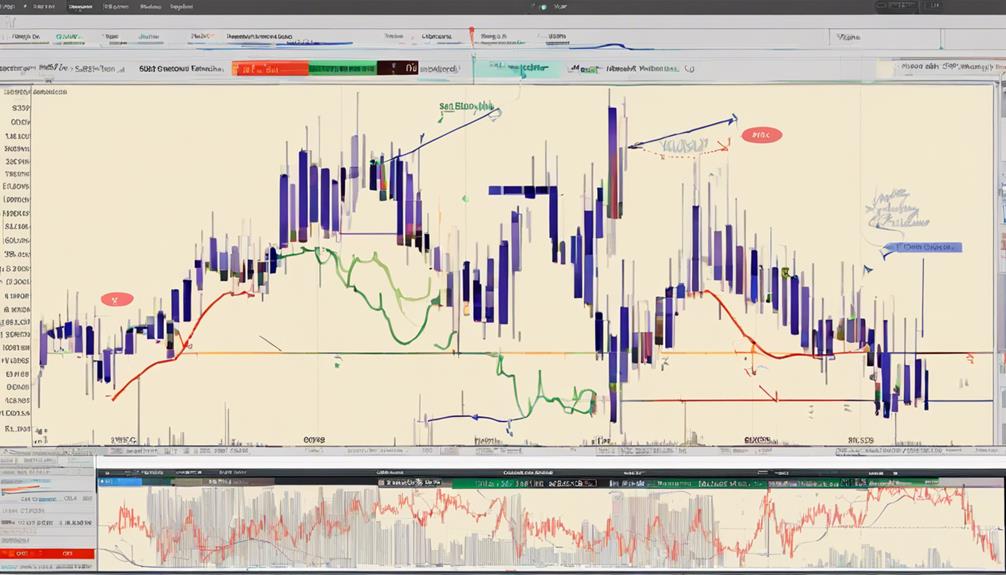If you're stepping into the world of trading, navigating the MACD indicator can be like finding your way through a complex maze. Understanding how this tool works can be the key to unlocking potential profits in the market.
By grasping the basics and learning how to interpret its signals, you can gain a valuable edge in your trading endeavors. But what are the specific strategies you should consider when using the MACD indicator?
Let's explore some practical insights that can help you harness its power for more informed decision-making in your trades.
Understanding MACD Indicator Basics
To grasp the fundamentals of the MACD Indicator, focus on its core concept of comparing two exponential moving averages. The MACD line, derived from subtracting the 26-period EMA from the 12-period EMA, serves as a key component of this indicator.
Additionally, a signal line, represented by a nine-day EMA, overlays the MACD line to provide buy or sell signals in trading scenarios. Understanding the relationship between these lines is crucial for identifying potential bearish trends and reversals in the market.
Positive MACD values indicate the 12-period EMA surpasses the 26-period EMA, while negative values reflect the opposite scenario. Mastering these foundational elements of the MACD Indicator is essential for effective trading strategies.
Interpreting MACD Histogram and Signals

When analyzing the MACD histogram and signals, focus on interpreting the difference between the MACD line and the signal line to gauge potential market trends and trading opportunities.
The histogram visually represents this difference, with a narrowing histogram indicating a possible crossover between the MACD line and the signal line, potentially signaling a change in trend.
Conversely, a widening histogram suggests increasing trend strength in the market. Key signals occur when the histogram crosses at the zero line, indicating significant shifts in momentum and potential trading opportunities.
Traders closely monitor these crossovers to make informed decisions based on the EMA of the MACD, identifying trading signals such as bearish crossovers for possible market reversals.
Identifying MACD Crossovers and Divergences

Identifying MACD crossovers and divergences allows traders to pinpoint potential buy and sell signals based on the relationship between the Moving Average Convergence/Divergence (MACD) line and the signal line.
MACD crossovers involve the MACD line crossing above or below the signal line, providing signals for upward momentum in bullish crossovers and downward pressure in bearish crossovers.
Divergences occur when the price trend and MACD indicator move in opposite directions, indicating possible trend reversals. Positive divergences show lower lows in price alongside higher lows in MACD, suggesting potential bullish reversals.
Avoiding Common Mistakes With MACD

Avoid common mistakes with the MACD indicator by understanding its limitations and implementing effective risk management strategies for successful trading.
The MACD indicator, based on two moving averages, generates buy and sell signals. Misinterpreting MACD crossovers can lead to incorrect trading decisions.
In range-bound markets, relying solely on MACD may result in false signals due to its nature as a lagging indicator. It's crucial to grasp the difference between the MACD line and the signal, as well as the relationship between the two moving averages.
Properly interpreting MACD histogram trends enhances the accuracy of trading decisions. Remember to combine MACD with other indicators for a comprehensive trading strategy and avoid solely relying on it for trading decisions.
Enhancing Trading Strategies With MACD

Enhancing your trading strategies with the MACD indicator involves incorporating its signals to identify trend changes and momentum shifts effectively. When using the MACD indicator, consider the following:
- MACD Crossovers: Utilize the crossovers between the MACD line and the signal line to generate entry and exit signals.
- MACD Histogram: Monitor the histogram to gauge the strength of signals and potential trend reversals.
- Utilizing Other Indicators: Combine MACD with technical indicators like RSI to enhance the accuracy of trading decisions.
What Are the Key Factors to Consider for Using the MACD Indicator as a Beginner?
As a beginner, the importance of MACD indicator lies in its ability to identify trend changes and potential buy or sell signals. Key factors to consider when using the MACD indicator include understanding its components, interpreting the histogram and signal line, and using it in conjunction with other technical analysis tools.
Frequently Asked Questions
How Do You Use MACD for Beginners?
To use MACD as a beginner, watch for crossovers between the MACD line and signal line. Buy signals occur when MACD crosses above, sell signals when below. Learn the histogram for trend strength evaluation. Practice with default settings and historical data for mastery.
What Is the Best MACD Indicator Strategy?
To craft the best MACD indicator strategy, focus on default settings like 12, 26, and 9 for EMAs. Seek crossovers of MACD line above/below signal line for buy/sell signals. Utilize MACD histogram for trend strength, and pair with indicators like RSI for informed trading decisions.
What Is the MACD Indicator Simplified?
To simplify, the MACD indicator compares moving averages for trend analysis. Subtracting longer from shorter periods creates the MACD line. Signal line crossovers indicate buy/sell points. Histogram bars show trend strength. Use it for market entry/exit decisions.
What Indicators Should I Use With Macd?
You should combine MACD with indicators like RSI, ADX, moving averages, and volume indicators to enhance your analysis. This comprehensive approach will help confirm trends, identify overbought/oversold conditions, gauge momentum, and validate trading decisions effectively.
Conclusion
You've now learned the basics of the MACD indicator and how to interpret its signals for trading success.
Did you know that according to a study by Technical Analysis of Stocks & Commodities magazine, MACD crossovers have been found to be accurate in predicting price movements over 70% of the time?
By incorporating MACD into your trading strategy and avoiding common mistakes, you can enhance your trading decisions and increase your chances of profitability.


